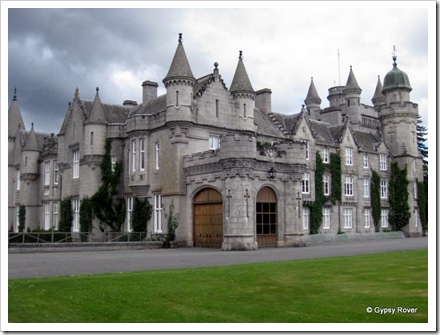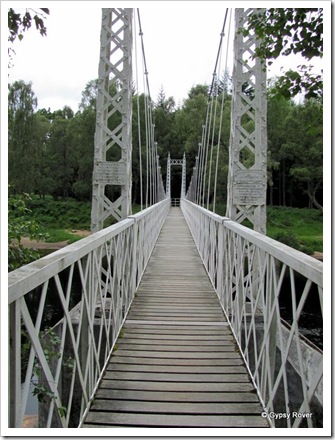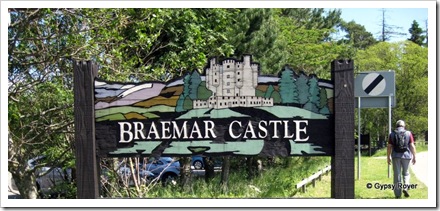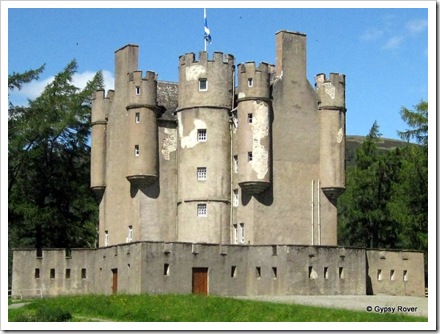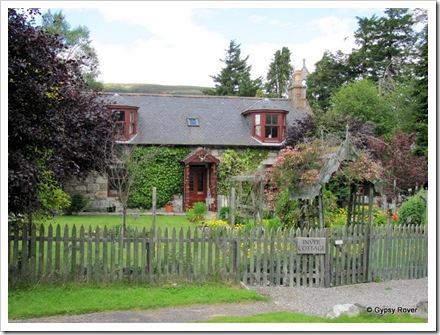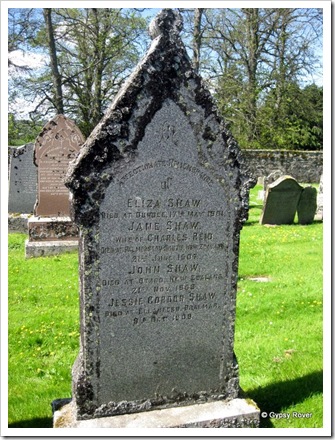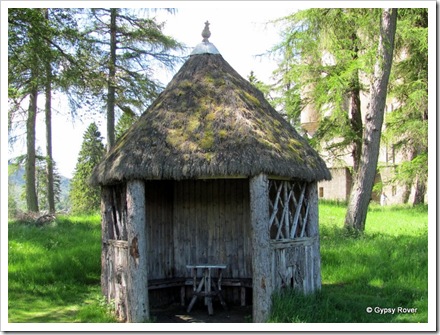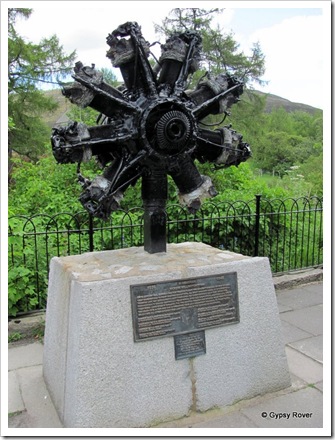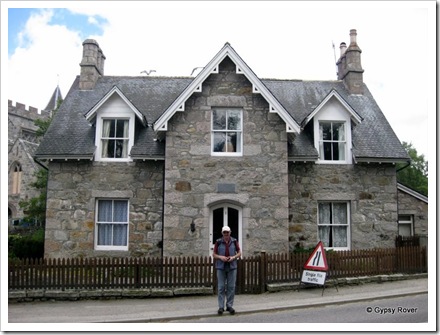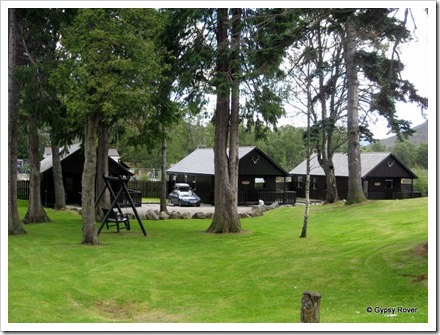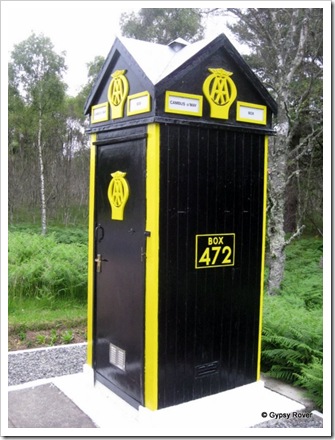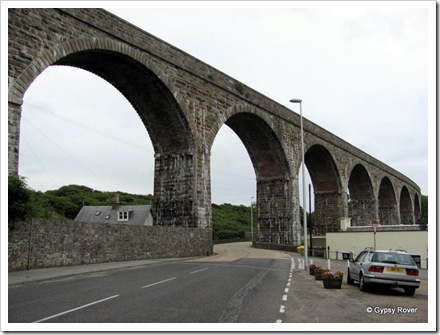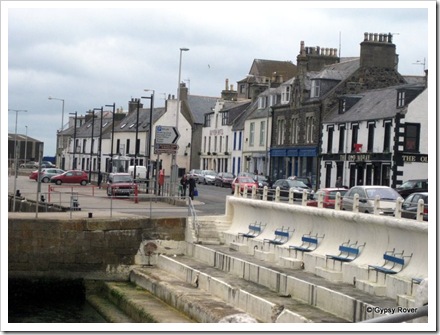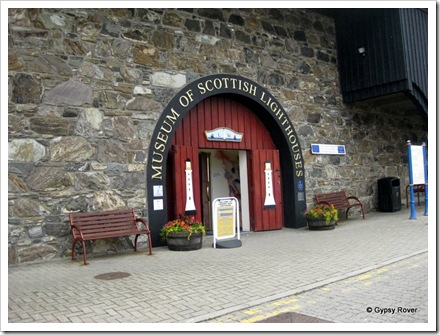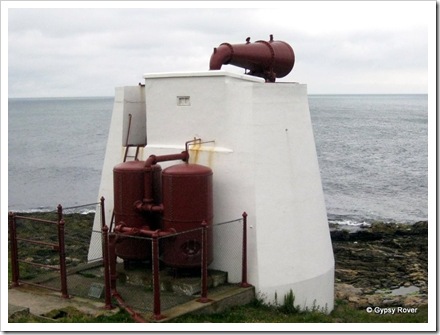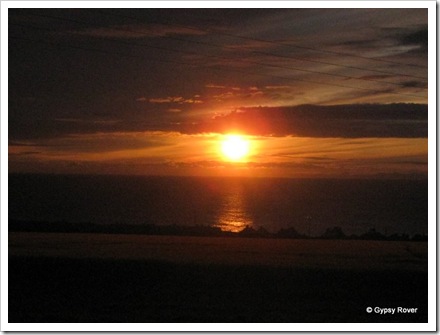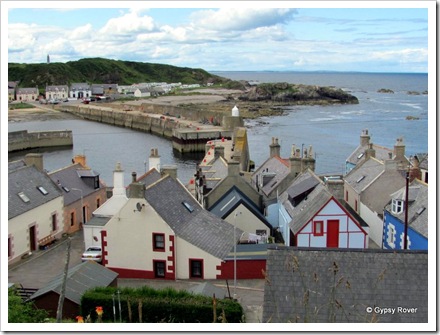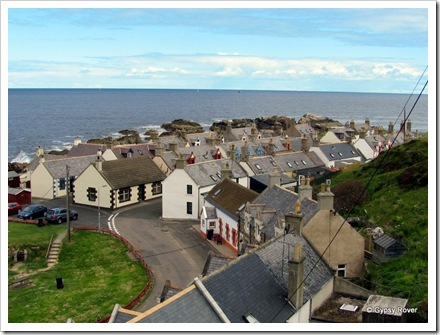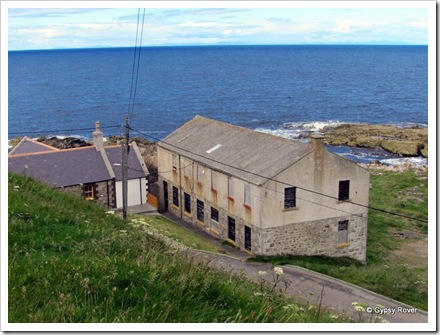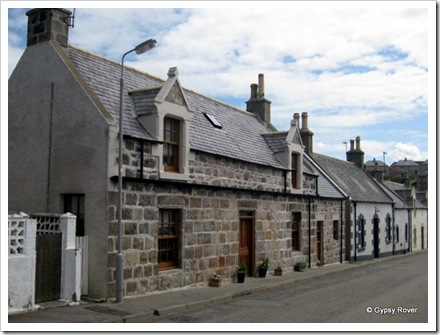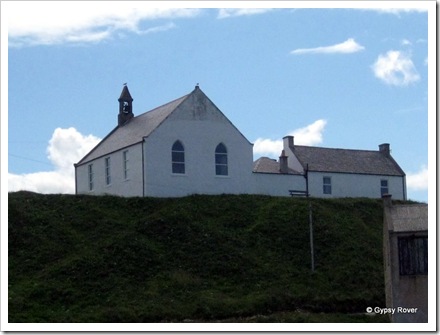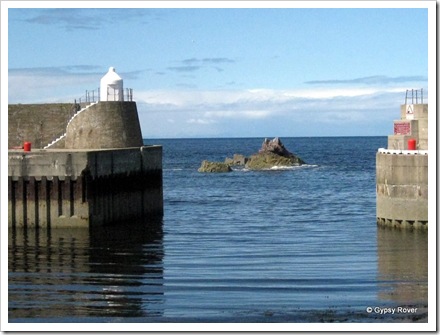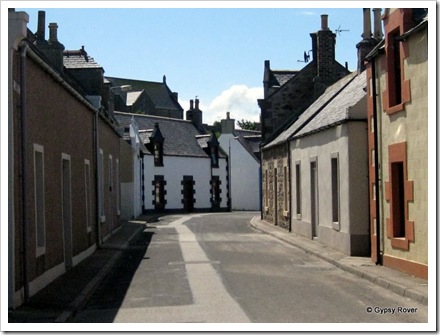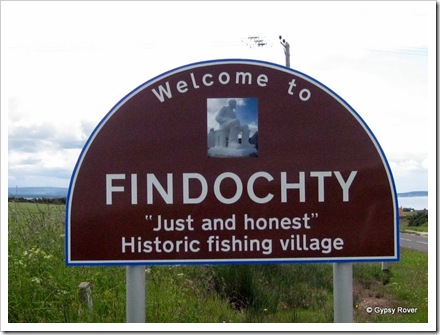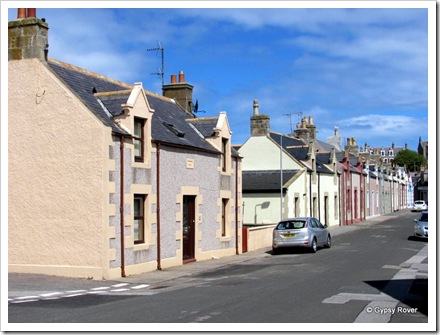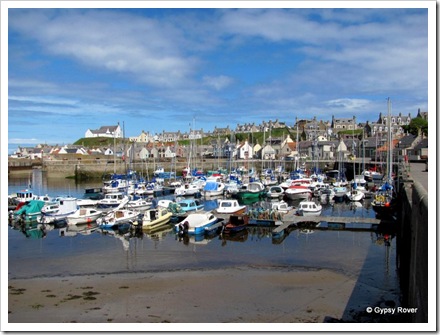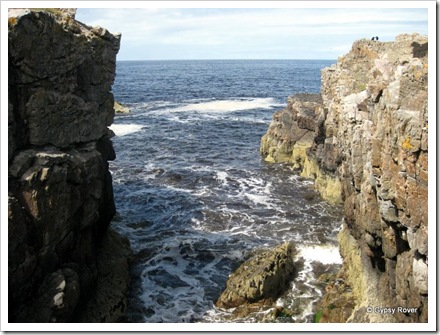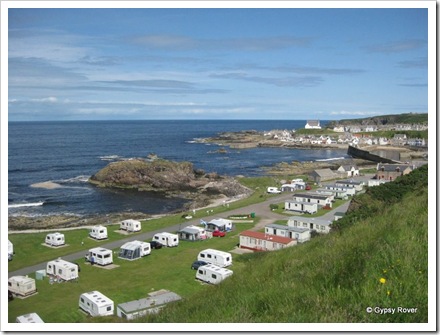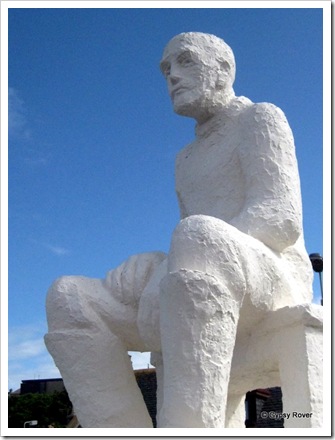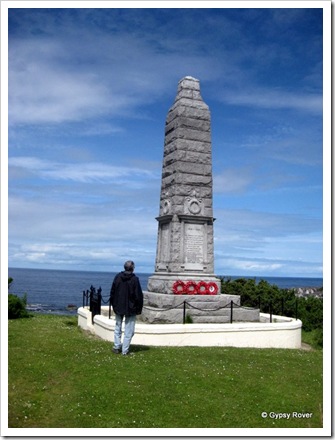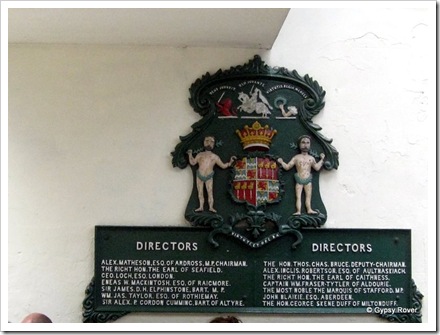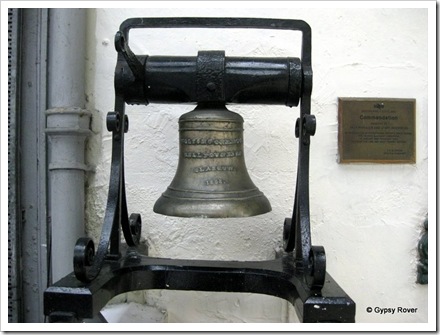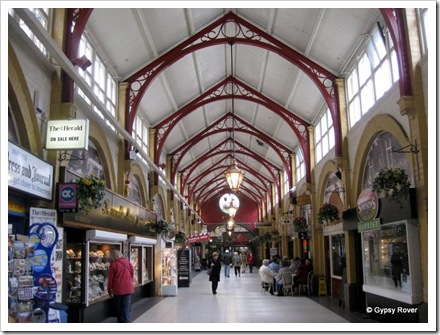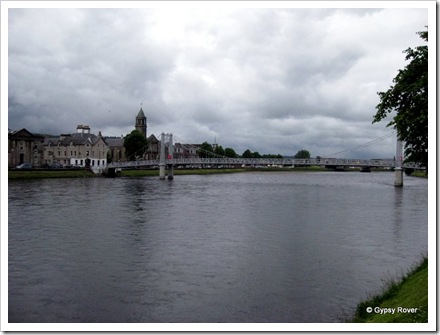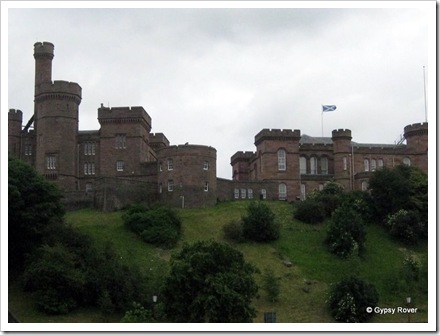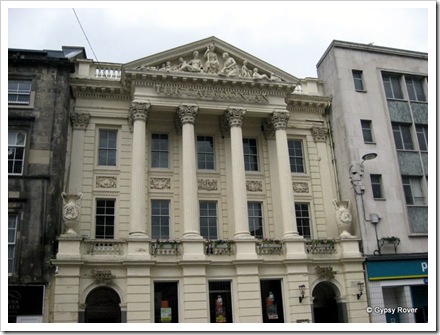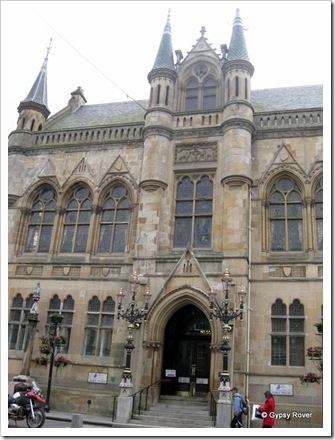42.3 Miles. Now at Silverbank Caravan Club site at Banchory.
.
Balmoral Castle
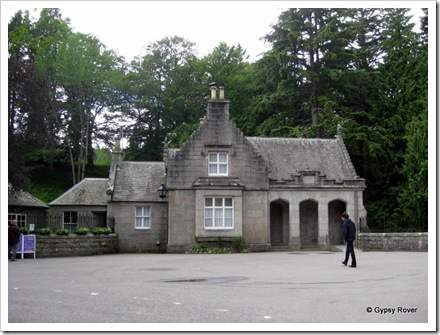 Gate keepers cottage at Balmoral Castle.
Gate keepers cottage at Balmoral Castle.
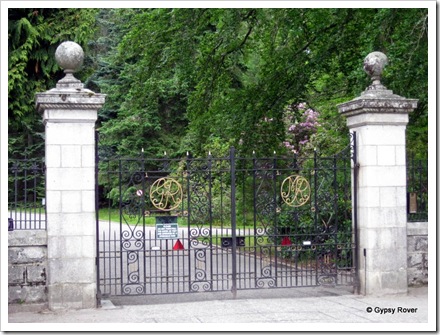 Entrance gates inscribed with Queen Mary and King George. Balmoral Castle.
Entrance gates inscribed with Queen Mary and King George. Balmoral Castle.
We had quite a busy day planned with several stop offs along the way. Luckily we were only travelling forty odd miles so time wasn’t an issue. First stop was Balmoral Castle, although technically it is a Hunting Lodge as it was not fortified as a castle. The building was designed by Prince Albert to replace an earlier castle on the site that was too small for royalty.The first thing we spotted was the bridge over the River Dee was designed by Isambard Brunel and built in Wiltshire. That guy certainly left his mark all over the country.
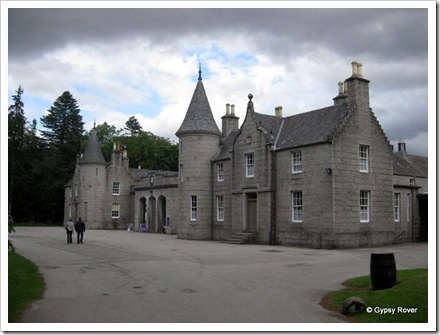 The entrance to the old stables and carriage store at Balmoral Castle.
The entrance to the old stables and carriage store at Balmoral Castle.
 Balmoral Castle gardens where exotic flowers are grown in the glass house. The engraving above the door reads "One is nearer God's heart in a garden than anywhere else on earth".
Balmoral Castle gardens where exotic flowers are grown in the glass house. The engraving above the door reads "One is nearer God's heart in a garden than anywhere else on earth".
Entering the estate you couldn’t help but be impressed by the huge Cedar and Pine trees lining the road up to the castle, they had a real old and gnarled look about them. Touring the gardens we learnt that the gardeners have a very short season in which to grow both vegetables and flowers as August is the only month they are guaranteed not to get frosts. Autumn is spent heavily composting the gardens to help protect them over winter which can put up to 2 foot of snow on the ground. June and July are busy months getting everything up to scratch for when the Queen and her family arrive for the Summer holidays.
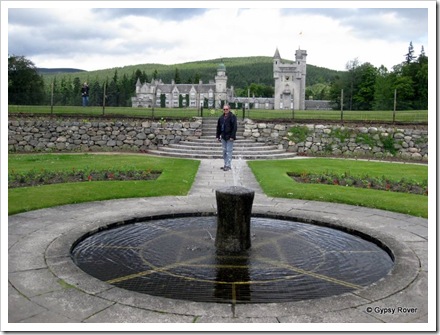 Balmoral Castle viewed from the grounds. The fountain is an old mooring bollard from Aberdeen.
Balmoral Castle viewed from the grounds. The fountain is an old mooring bollard from Aberdeen.
Since being purchased originally by Queen Victoria for her “Bertie”, Balmoral has been a strong favourite with all the royals. Hiking, horse riding, hunting and fishing, they all take part in one or more of these activities. There is plenty of deer stalking as there are approximately 3500 deer on the estate of which about 10% are culled each year just depending on the breeding season. The cull is very tightly controlled as the stags are dealt with before the Rut so they are in prime condition and the hinds just before winter after the fawn’s are weaned.
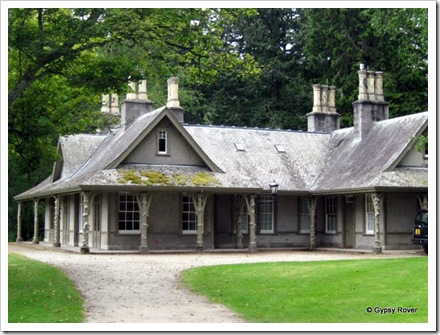 The Garden cottage at Balmoral castle which was an isolation hospital for 2 years.
The Garden cottage at Balmoral castle which was an isolation hospital for 2 years.
One building in the grounds looked a bit like a six sided summer house with slit windows. It transpired that this was the slaughter house where the culled deer are brought by horse back to be cleaned and dressed ready for market. In general the wild life on the estate are well managed to ensure survival of the species for future generations.
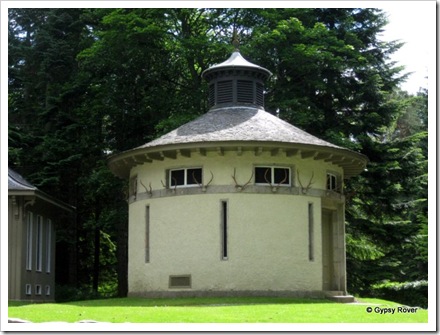 The slaughter house where culled deer are cleaned and processed ready for market.
The slaughter house where culled deer are cleaned and processed ready for market.
In the castle, the only room open to the public is the ballroom which as ballroom’s go is quite small. Around the wall’s were an array of red deer heads some of which were 12 pointers (Royals) and 14 pointer’s (Imperials), trophy hunters dreams. For the ladies there were 5 David Hartnell designed dresses worn by the Queen at various functions plus some expensive silverware.
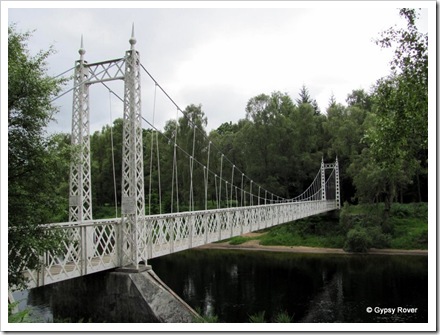 Canbus O'May suspension bridge over the river Dee. Built in 1905 reconstructed 1988.
Canbus O'May suspension bridge over the river Dee. Built in 1905 reconstructed 1988.
Leaving Balmoral castle we headed to Ballater where Royalty have arrived by train for a century. It was the end of the line from Aberdeen which I suspect had been built purposely for Queen Victoria. The line was to be extended but the Queen didn’t want it going past Balmoral disturbing the peace and quiet so it never was. The station was restored after the line closed in 1965 and opened as a museum and information centre in 2001. Despite the exhibit being well done I felt it didn’t warrant an entrance fee. In saying that we realise that the Queen Victoria story is a big income earner for the district and a big employer when you consider the 1200 staff employed at Balmoral Castle.
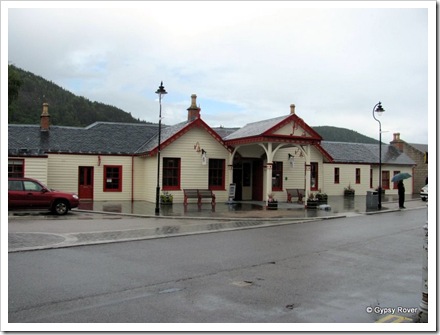 Ballater Railway Station restored as a museum in 2001, after being closed in 1965.
Ballater Railway Station restored as a museum in 2001, after being closed in 1965.
 The LNWR Royal carriage at Ballater Station museum.
The LNWR Royal carriage at Ballater Station museum.
 The ornate panels and ceiling of the Royal Station at Ballater.
The ornate panels and ceiling of the Royal Station at Ballater.
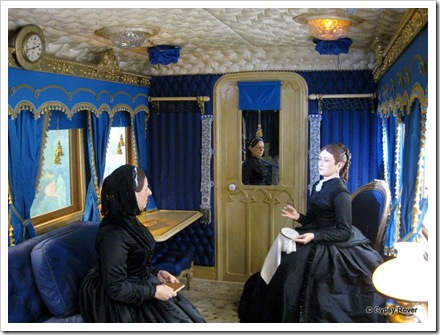 Queen Victoria's Royal carriage built by the London North Western Railway.
Queen Victoria's Royal carriage built by the London North Western Railway.
 By Royal appointment. There are quite a few of these signs in Ballater.
By Royal appointment. There are quite a few of these signs in Ballater.
A total of 3537 miles, since 5 March 2011

